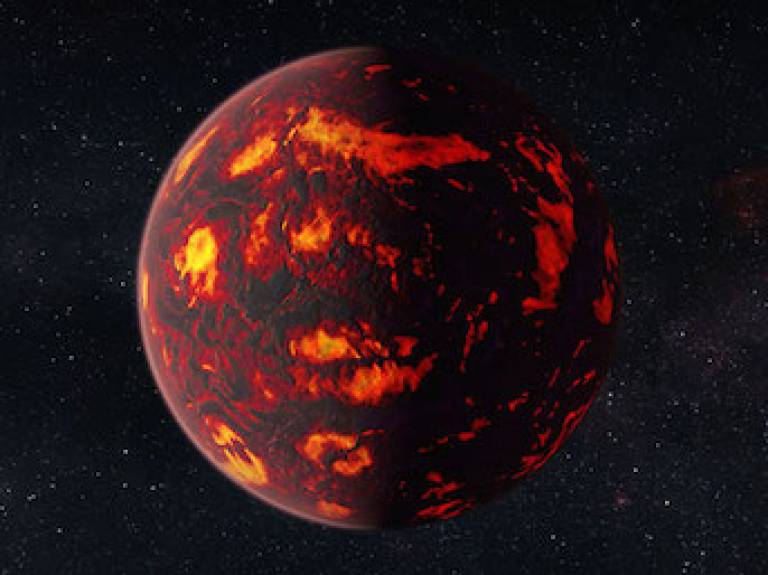First detection of gases in super-Earth atmosphere
17 February 2016
CPS members led by UCL PhD student Angelos Tsiaras have made the first successful detection of gases in the atmosphere of a super-Earth, revealing the presence of hydrogen and helium, but no water vapour.

Using new processing techniques on data from the NASA/ESA Hubble Space Telescope, the UCL-led team of European researchers has been able to examine the atmosphere of 55 Cancri e in unprecedented detail.
"This is a very exciting result because it's the first time that we have been able to find the spectral fingerprints that show the gases present in the atmosphere of a super-Earth," said Angelos Tsiaras, a PhD student at UCL who developed the analysis technique along with colleagues Dr Ingo Waldmann and Marco Rocchetto in UCL Physics & Astronomy.
"Our analysis of 55 Cancri e's atmosphere suggests that the planet has managed to cling on to a significant amount of hydrogen and helium from the nebula from which it formed."
Intriguingly, the data also hinted at a signature for hydrogen cyanide, a marker for carbon-rich atmospheres.
"If the presence of hydrogen cyanide and other molecules is confirmed in a few years' time by the next generation of infrared telescopes, it would support the theory that this planet is indeed carbon rich and a very exotic place," said Professor Jonathan Tennyson (UCL Physics & Astronomy).
The full UCL press release provides further details and the results will be published in the Astrophysical Journal.
The research at UCL was funded by the Science and Technology Facilities Council and the ERC projects ExoLights and ExoMol.
Links
Image
- Artist's impression of 55 Cancri e (credit: NASA/ESA Hubble Space Telescope)
 Close
Close

